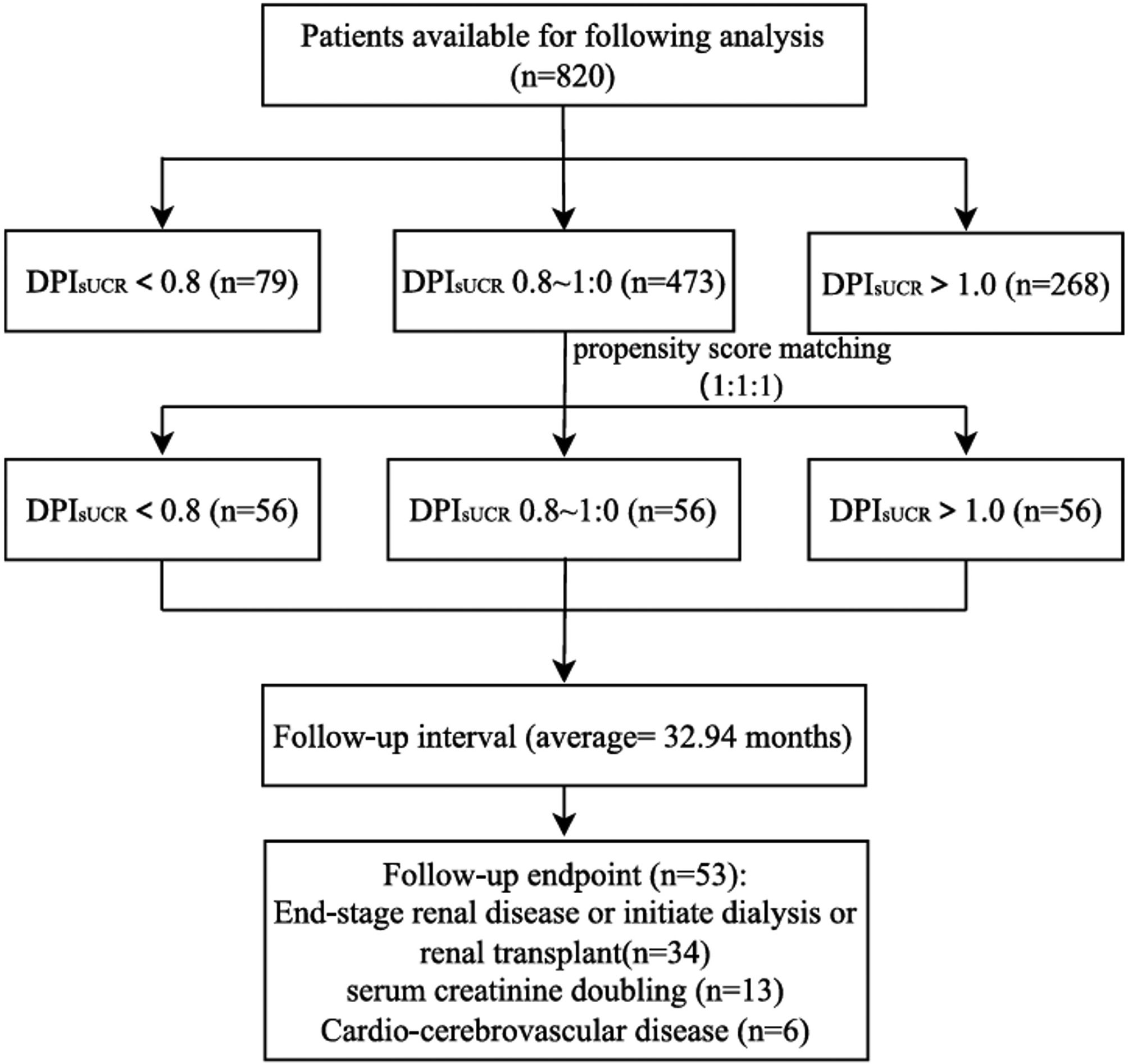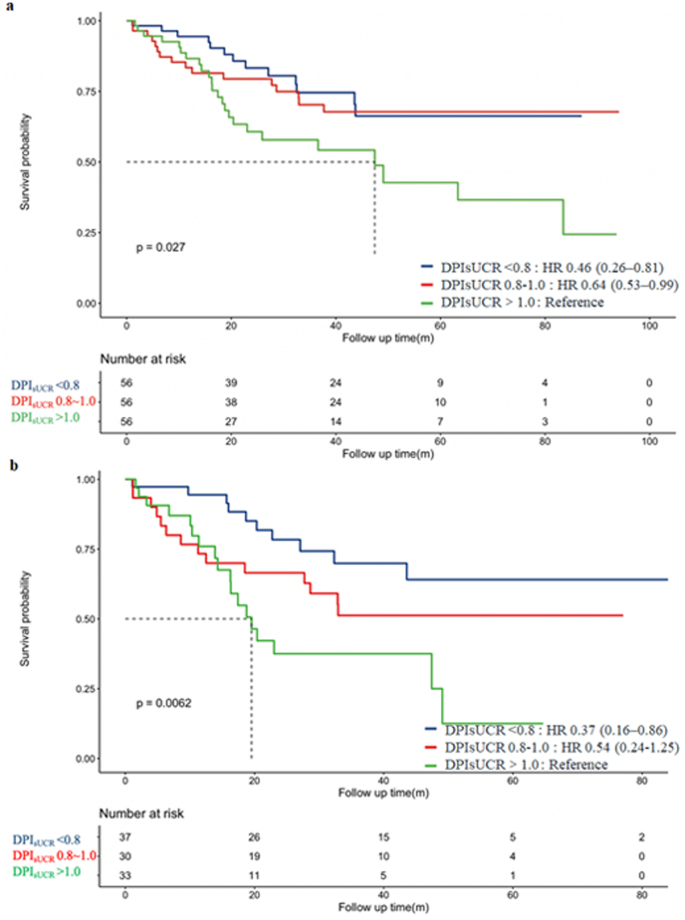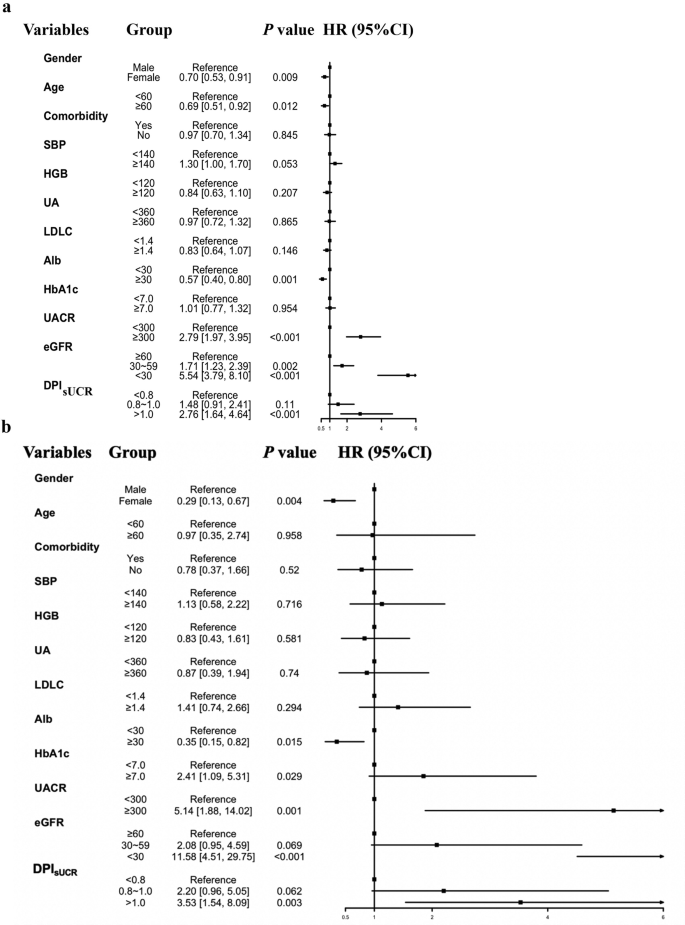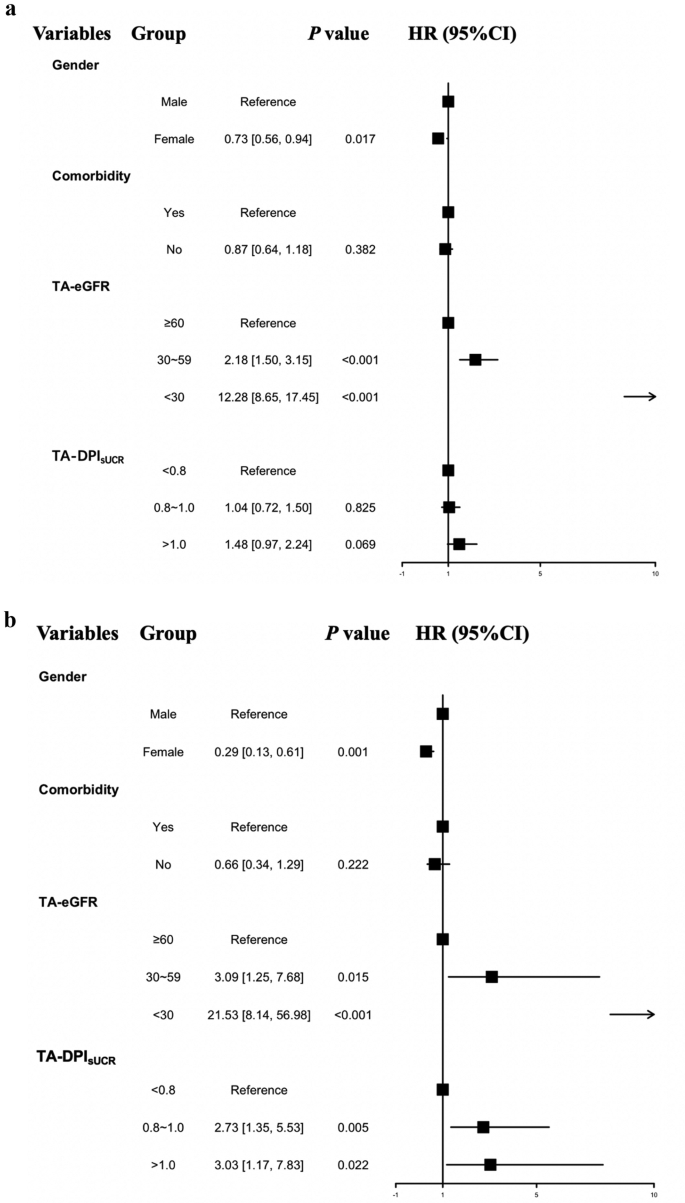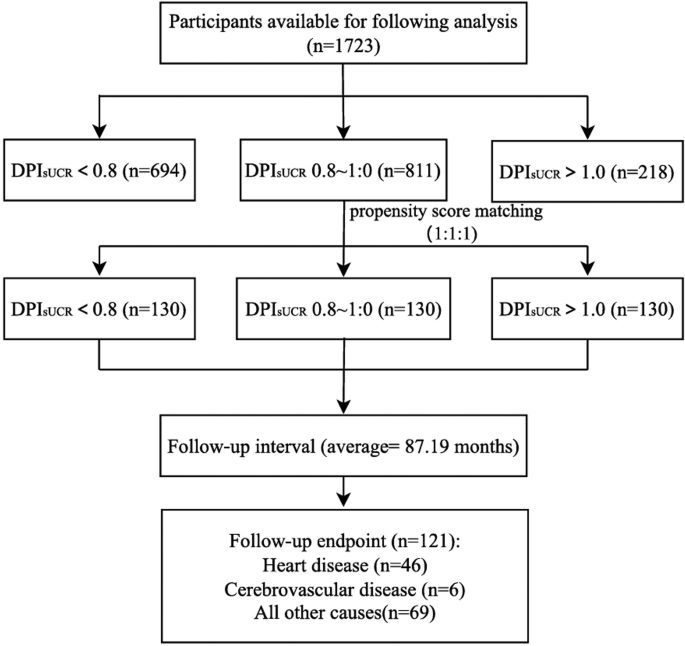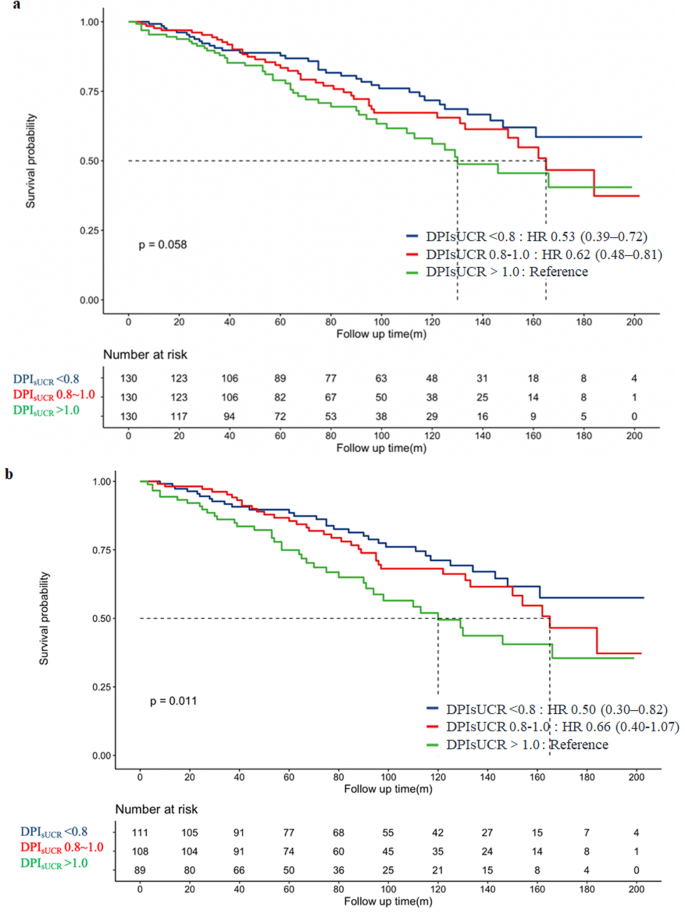Introduction
Chronic post-surgical pain (CPSP) is known as a debilitating disease that significantly reduces quality of life and carries substantial biopsychosocial and economic consequences for both patients and society. Furthermore, low return-to-work rates and increased school absenteeism further contribute to the high socio-economic burden of chronic pain.1 Given that over 230 million people undergo surgery globally each year, with CPSP developing in 10% of surgical procedures and reaching up to 85% in certain outliers,2,3 a vast potential for CPSP is represented.4,5 Additionally, the number of surgical procedures is expected to expand with increasing obesity, inflammatory diseases and increased life expectancy. After recognizing the problem of CPSP in the 1990s, the definition underwent several modifications in recent years and many different definitions of CPSP are maintained in the literature.6–8 Recently, the definition of CPSP became more standardized after inclusion in the International Classification of Disease (ICD-11). However, since this ICD-11 definition is relatively new, its implementation is still in progress.3 The clinical success of (preventive) CPSP management remains unfortunately often unsatisfactory with persistent pain complaints and accompanying anxiety and depressive symptoms.9 In the last two decades, research on risk factors in the development of CPSP has grown significantly.2,5 Nevertheless, this has not yet led to improved postsurgical patient outcomes.9 A presurgical CPSP prediction model, suitable for daily use across a large surgical population, which has the potential to allocate high risk patients to the appropriate type of care, is urgently needed.
Up to now, different models have been developed estimating postsurgical acute and chronic pain.10–13 However, current predictive models for CPSP often face limitations due to a narrow selection of surgical procedures, which restricts their generalizability. They also struggle with incorporating parameters from the postoperative period and rely on data that are challenging to collect in routine practice. Furthermore, many models lack robust validation, reducing their clinical utility in identifying high-risk patients across diverse surgical contexts. Additionally, the increasing adoption of the International Association for the Study of Pain (IASP) definition of CPSP raises concerns about the clinical use in cases where patients experience ongoing pain after surgery, either due to pre-existing complex pain unrelated to surgery, mixed pain conditions or minimal reductions in pain intensity post-surgically, reflecting even more its complexity.13
Despite the complex biopsychosocial interplay of chronic pain, various surgery– and patient-related risk factors consistently emerge in the likelihood of CPSP occurrence.9 Yet, many of these factors are not easily modifiable, and others are too labor-intensive to assess effectively in a typical preoperative clinical setting. However, estimating probability of CPSP occurrence using a generalizable preoperative model could not only improve patient care and surgical outcomes by facilitating early pain management but also guide further research in the treatment of CPSP such as evaluation of pharmacological strategies in identified high-risk individuals. Moreover, CPSP prediction can have economic benefits by enhanced recovery post-surgery with early pain management and a more fluent reintegration including return to work.
Therefore, the aim of this study was to develop a presurgical CPSP risk prediction model with good discriminative power, clinical applicability, and possible generalization to a broad group of adults undergoing different types of surgery.
Materials and Methods
Participants
After approval by the Ethics Committee (BUN B3002022000112, September 2022), this single center observational pragmatic pilot study, called PERISCOPE trial, was conducted at the Antwerp University Hospital (UZA), Belgium, in accordance with the Helsinki Declaration and GCP guidelines. The protocol, including the design, of this observational pragmatic pilot study (ClinicalTrials.gov NCT05526976) has been published previously.14 Between December 2022 and September 2023, 660 Dutch-speaking adults scheduled for any type of surgery were recruited preoperatively at the tertiary Antwerp University Hospital. A written informed consent was provided by all participants prior to participation. Patients were excluded if one of the following was present: age below 18 years, not able to complete questionnaires, (diagnostic) procedures without scheduled intervention (such as bronchoscopy, hysteroscopy, gastroscopy, and colonoscopy), or informed consent refusal. Included patients received an analgesic regimen prescribed for postoperative pain by the attending anesthesiologist according to the surgery-specific anesthesia guidelines as performed in our center.
Study Design, Data Collection and Outcome Variable
During the study duration, there were no deviations from the standard of care nor additional interventions were executed. This study followed the Transparent Reporting of a multivariable prediction model for Individual Prognosis or Diagnosis (TRIPOD) guidelines for prediction model development.15,16
Patient‐reported data acquired at screening visit, post-surgery day 1, month 1 and month 3 were collected electronically (REDCAP®, Research Electronic Data Capture, Version 13.6.1, Vanderbilt University, Nashville, Tennessee, USA). During the screening visit, the socio-demographic characteristics (age, sex, level of education and BMI) of all participants, as well as their medical history, preoperative analgesic usage and surgical details were recorded and verified through the electronic medical record. Additionally, participants were instructed in the pain assessment that would be conducted throughout the study trajectory. Participants were asked to electronically complete the following patient-reported outcome measurements (PROMs) at three different timepoints (before surgery, 1 month and 3 months after surgery): surgical-site pain intensity (11-level numeric rating scale (NRS)),17 health-related quality of life (EQ-5D-5L),18 patient experienced level of depression and anxiety (Hospital Anxiety and Depression Scale (HADS) and Spielberger’s Trait Anxiety Inventory (STAI-trait).19–21 Herewith, experienced concerns about the surgery were assessed considering its prevalence in daily practice and suggested opportunity for future intervention.9,21–23 When, pain intensity was scored above two on the 11-level NRS, pain assessment was extended with a screening for neuropathic pain characteristics (Douleur Neuropathique questionnaire (questionnaire part of the DN4)24 and a validated self-report of pain impact on life (Multidimensional Pain Inventory (MPI) part 125). Additionally, a modified version of Kalkman and Althaus index, which previously showed good predictive properties, was assessed presurgical.26,27
Acute postoperative pain intensity (NRS) on post-surgery day 1 was registered as an additional timepoint. A condensed version of the study design is illustrated in Figure 1. To minimize follow-up non-compliance, up to five reminders were sent via Email and telephone. During follow-up contacts changes in medication, diagnosed surgical complications and visits to the general practitioner/psychologist/surgeon/pain physician were logged.
|
Figure 1 Study design. Perioperative patients flow with indicated times when questionnaires were asked to be filled in.
|
The objective of this study was to develop a presurgical CPSP risk prediction model useful for clinical practice, with a generalizability to a variety of surgical procedures. The outcome parameter of interest for CPSP was defined as the pain intensity localized at the surgical field of ≥3 on NRS, three months post-surgery.
Candidate Predictors
Based on clinical knowledge and a review of the literature, we identified 33 candidate predictors (comprehensive list available in Appendix 1). Within this predictors group, we considered sociodemographic characteristics including sex, age, BMI and educational level (low (no secondary education)/intermediate (secondary education)/high (higher education)), presurgical analgesic consumption (Yes/No, opioids and antineuropathics), surgical procedure and the above mentioned PROMs (modified version of Kalkman and Althaus, NRS, EQ-5D-5L, HADS, STAI).18,19,26–28
The 44 different executed surgical procedures across 11 disciplines were categorized by 3 independent pain physicians into six categories according to the Kalkman classification: Ophthalmology, Laparoscopy, Ear-nose throat (ENT) surgery, Orthopedic surgery, Laparotomy and Other surgeries.26 Furthermore, the procedures were classified into the following categories: small procedures with high risk, large procedures with high risk, and other, as outlined in the protocol.14 Additionally, these surgical procedures were divided into a categorization using 7 categories (Surgical-7 categorization) as an alternative to the Kalkman classification.
Sample Size Calculation
A logistic regression model has been developed to predict the probability of CPSP 3 months post-surgery. The estimated probability from this model was then used to construct a ROC curve (receiver operating characteristic) to discriminate between CPSP and non-CPSP and determine the optimal cut-off risk value regarding maximal sensitivity and specificity.
The sample size calculation was based on constructing a 95% confidence interval for the area under the ROC curve (AUC). A width of 0.2 and assuming an AUC of 0.7 showed the need for at least a group of 56 CPSP-patients.29 Based on the available scientific evidence at the time of study design, considering a possible mixed CPSP incidence of 10%, we needed a minimum inclusion of 560 patients scheduled for surgery. Taking subject withdrawal, incomplete data or lost to follow-up into account, a total of 660 patients were recruited.
Statistical Analysis
Numeric variables are summarized with mean and standard deviation or median and interquartile range and categorical variables with observed frequency and percentage. An initial logistic regression model was fitted with Kalkman score and modified Althaus as predictors and CPSP as outcome. Given a multivariable model with all predictors was not possible (only 80 cases), a stepwise forward approach was followed to build the prediction model. Starting with univariable models evaluating all 33 candidate predictors, the predictor resulting in the best model in terms of highest AUC and significance was then retained. In the next step, multivariable models with 2 predictors are considered, keeping in each model the best univariable candidate and adding one of the other candidate predictors. Overlapping candidates were left out (eg, different instances of pain, different instances or surgery). These steps are repeated for multivariable models with 3 (keeping the 2 best candidates from the previous model fixed and adding one extra candidate) and 4 predictors leading to a final model. The ROC curve of the final model is then compared with the ROC curve of the initial model using a DeLong’s test for correlated ROC curves. Bootstrap techniques were used to evaluate the model’s performance in similar future patients. Random bootstrap samples were drawn with replacement (100 replications) from the data set consisting of all patients who filled in the Kalkman and modified Althaus questionnaire preoperatively and the NRS score at month 3 (n = 415). Forward selection of the candidates was repeated within each bootstrap sample. This allowed us to adjust the estimated model performance and regression coefficients for overoptimism or overfitting. A calibration plot was constructed to examine the agreement between the predicted probabilities and the observed frequencies and calibration measures (Expected/Observed) E/O ratio, calibration slope and calibration in the large (CITL) are reported.
A complete case analysis on n = 415 patients was used per considered model (if a patient has missings in a variable not included in the model, the patient contributed to the considered model) (Figure 2). No single candidate predictor had missing values >5%. As the outcome was missing in 16% of 496 patients, multiple imputation was considered with 50 imputed datasets and model selection and bootstrap validation were repeated on the imputed datasets.
 |
Figure 2 Flowchart of sample cohort for analysis.
|
All analyses were performed with the statistical software R version 4.3.1. except the bootstrap validation of the final model which was done in Stata version 18.5. Multiple imputation was done with the R-packages MICE and psfmi was used for model estimation, pooling and validation after imputation.
Results
Patient Demographics and Characteristics
In this pilot study, 660 patients were included. Of the 660 recruited subjects, 164 were excluded from analysis due to preoperative factors (24.8%). Of the 496 subjects having preoperative data, 81 were excluded due to postoperative factors (16.3%). Figure 2 summarizes the study sample cohort for analysis. Table 1 provides descriptive statistics for the 415 patients at the screening visit. These 415 patients underwent 44 different operations in 11 disciplines. Three months post-surgery 19.3% of the surveyed subjects reported a pain NRS score ≥3 at the surgical site (Figure 3).
 |
Table 1 Descriptive Statistics at Screening Visit
|
 |
Figure 3 Overview of the distribution of pain intensity (NRS) at the surgical site area three months post-surgery.
|
Development of a New Predictive Model
The initial model with Kalkman score (p < 0.0001) and Althaus risk index (p = 0.074) as predictors for CPSP, results in an AUC of 0.72 (95% CI [0.66,0.78]). From the univariable models with each of the 33 predictors, several predictors are significant where highest AUCs are obtained for the preoperative pain questions (NRS q1 (p < 0.001), q2 (p < 0.001) and Kalkman preoperative pain (p < 0.001)), respectively, 0.76, 0.77 and 0.76). Next, the 30 predictors (leaving out NRS q2 and Kalkman preoperative pain as they are also pain variables) were now added to the model with NRS q1. This model with two predictors led to the highest AUC of 0.80 when including Kalkman surgery (p = 0.001) besides NRS q1. As the category Ophthalmology is very small the Kalkman surgery is from now on recategorized into five categories with Ophthalmology and Other as one category. In the next step evaluating a model with three predictors including the concern question “I am worried about the procedure” (p = 0.032) is retained with an AUC of 0.81. Finally, a model with four predictors adding Education (p = 0.047) as fourth variable gives an AUC of 0.81 (95% CI [0.76,0.87]). Comparing the final model with the four predictors NRS q1, surgery, concern question and education to the initial model with Kalkman score and Althaus risk index gives a p-value of 0.0003 (DeLong’s test) showing a significant improvement (higher AUC) of the final model to this initial model. Together, these four questions form the Persistent Post-surgical Pain Prediction (P4)-Prevoque™ questionnaire (Table 2).
 |
Table 2 Final Model for Presurgical CPSP Prediction: PrevoqueTM Questionnaire
|
Bootstrap was used to adjust for overfitting and the AUC of the final model was 0.76 (overoptimism 0.05). The odds (adjusted for overfitting) on CPSP were 27% higher when the pre-operative pain score goes up 1 unit on the 11-level scale. ENT surgery has the smallest odds on CPSP, and abdominal surgery has more than 8 times higher odds on CPSP compared to ENT, other and ophthalmic surgery 6 times higher odds compared to ENT, orthopedic surgery more than 4 times and laparoscopic surgery 2.5 times higher compared to ENT. The odds on CPSP were 19% higher when the answer on “I worry about the operation” goes up with one unit. The patients with low education level have an almost 3 times higher odds on CPSP compared to intermediate and high education level. The predicted probabilities using the regression coefficients adjusted for overfitting in the final model were then calculated. According to the Youden index the ideal cutoff on these predicted probabilities is 23.9% resulting in a sensitivity of 69.7% and specificity of 82.0%. Using the closest in the top left corner method, a cutoff of 20.58% is chosen resulting in a sensitivity of 73.7% and a specificity of 77.0%. Figure 4 displays the calibration plot of the observed outcomes versus the predicted outcomes with the performance measures E/O ratio, calibration slope and calibration in the large where we see a slight tendency that estimates are a bit too high for individuals at high risk, and too low for those at low risk but overall calibration measures are fair.
 |
Figure 4 Calibration plot for validation of the proposed prediction model.
|
Pooling and selecting the logistic regression models of the 50 imputed datasets revealed a similar model with the same 4 predictors. Internal validation across the imputed datasets with bootstrapping resulted in an optimism corrected AUC of 0.76 (95% CI [0.67,0.82]). Optimism corrections were larger for calibration results.
Discussion
This study presents the development of a presurgical CPSP prediction model for adults undergoing a wide range of surgical procedures. Prediction models are being developed to help healthcare providers estimate the likelihood of a particular event occurring so that they can adjust their decisions accordingly.30 So far, various models have been created in recent years to predict postsurgical pain. However, to date, no generalizable CPSP risk stratification model independent for type of surgery is extensively applied. Our multivariable developed model, P4-Prevoque™ questionnaire, can presurgical classify adults undergoing a scheduled surgical procedure, forecasting an individual likelihood of CPSP based on four pre-operative patients’ characteristics: preoperatively pain score at the surgical area (0 to 10 on NRS) [1], the type of surgery (in 5 categories) [2], education level (in 3 levels) [3] and concerns reported about the planned surgical procedure (in 6 levels) [4]. Model performance is good in terms of discriminative power and calibration meaning the model is a useful tool for detecting CPSP.31
In our single center study cohort, 19.3% of the included patients reported a pain intensity of more than 2 to 10, three months after surgery. Although this finding falls within the broad spectrum of reported CPSP incidence, this average may still be considered comparatively high.3,5,9,32,33 Type of surgery is a known contributing factor to the substantial incidence variation.9 Moreover, this high mean incidence in our study cohort may be indicative of the tertiary hospital surgical procedures and population. Additionally, the inconsistent application of CPSP-definitions may serve as a confounding factor. Since the ICD-11 definition is relatively recent and implementation is ongoing, it is important to note that many different definitions are still maintained in the literature as described by Glare et al.34 In a supplementary analysis, the most recent definition of CPSP as outlined in the ICD-11 defining CPSP as an increase in NRS score of 1 or more at 3 months post-surgery compared to preoperative values was considered for the subjects who had an increase in pain intensity at month 3 compared to pre-surgery.3 This resulted in a group of 72 CPSP patients according to ICD-11 definition. Of those 72 patients, 29 had CPSP both according to the ICD-11 definition and the primary outcome variable. Furthermore, a second predictive model analysis for this subsequent outcome variable was executed. This included presurgical pain intensity at the surgical area (11-level NRS), type of surgery (Surgery-7 classification) and STAI trait and is as such similar to the proposed primary model. Despite the necessity for uniformity in definition, we acknowledge the concerns raised in the recent publication by Papadomanolakis-Pakis et al regarding the ICD-11 definition. Specifically, patients with stable or reduced pain levels are not classified as CPSP by the ICD-11 definition, highlighting the need for pain assessment in educated patients or clinical confirmation in the diagnosis of CPSP.13 Furthermore, patients exhibiting the maximum indicated pain score preoperatively are unable to report a higher score on the NRS post-surgery, thereby rendering them ineligible for the diagnosis of CPSP under this definition. This CPSP definition, in response to the need for a scientifically rigorous and practically applicable framework, is likely to evolve over the next few years. It may also incorporate considerations regarding the impact of analgesic use and changes in pain type within its diagnostic criteria.
Presurgical pain is found to be a strong predictor in our proposed model. This finding is in line with literature that the presence of persistent nociceptive stimulation may cause pain physiology changes leading to a sensitized nervous system.35,36 Also, the predictive role of surgical type is in accordance with previous literature as surgical tissue trauma, surgery duration and neuronal damage are important contributing factors.9 Furthermore, a recent meta-analysis by Giusti evaluated psychosocial predictors for CPSP and concluded that a heterogeneous group of psychological predictors are significantly associated with CPSP.22 In this study, concerns about the surgery, and anxiety and depression as identified psychosocial predictors were assessed. Worrying about the planned surgical procedure as a single question answer appears to be more predictive than anxiety or depressive states in this study cohort.
As mentioned, during recent years, a handful of prognostic models have been developed on postoperative pain intensity.10,13,32,37 Two existing prediction models identified as potentially useful in daily practice were incorporated in this research and compared with our prediction model.26,27 However, the Althaus risk index was specifically developed to predict pain 6 months post-surgery and included post-surgical acute pain as a predictor (although a version of the model without this variable is also presented in their publication).27 Similarly, the Kalkman score focused on the presence of severe postoperative pain within the first hour following surgery as the outcome.26 Consequently, these models differ in their outcomes and are therefore not entirely comparable. Notwithstanding, the modified version of Kalkman and Althaus risk index (without the post-surgical acute pain item) was assessed preoperatively, and logistic model evaluation resulted in an AUC of 0.72. Comparatively, the developed prediction model resulted in an AUC of 0.81. Both ROC curves were then compared with a DeLong’s test for correlated ROC curves leading to a p-value of 0.0003 showing the significant improvement of the AUC of our model. Our findings suggests that both the Kalkman score and the Althaus index are effective presurgical prediction models for CPSP, although they were not used in this study for the intended outcome or at the appropriate timepoint. However, the P4-Prevoque™ model, as designed, demonstrates greater accuracy and significantly enhanced predictive power compared to the two previously mentioned models.
A comparison with even more recently developed prediction models11,12,38 is not feasible due to substantial differences in the study populations and outcome variables including varying interpretations and applications of CPSP definition, timing and the selection of predictors. Beyond the similarities and differences between the P4-Prevoque™ model and the few existing alternatives, the proposed P4-Prevoque™ model distinguishes itself by its inclusive nature, enhancing its generalizability. Our objective was to design a risk model for CPSP that is both clinically relevant and suitable for widespread implementation, by reducing the number of questionnaires and categorizing the responses in a manner conducive to preoperative screening visits, telephone consultations, and digital preoperative care pathways. The P4-Prevoque™ questionnaire facilitates a rapid assessment of the risk for developing CPSP or transitioning to a more severe pain condition. It offers multiple applications for vulnerable patients scheduled for surgery, enhancing patient allocation in research trials, informing tailored management strategies, and ultimately improving their comprehensive postoperative outcomes.
The potential benefit in reducing the incidence of CPSP using a prediction model, to date, still remains unclear.9–13 Nevertheless, CPSP as a complex biopsychosocial phenomenon with an often challenging treatment approach could benefit from an early, presurgical patient-centered care.9,22,34,39 Early identification of individuals at risk for developing CPSP is essential to ensure prompt assignment to the appropriate care. Subsequently, it will have to be investigated whether early non-pharmacological and pharmacological approaches in at-risk subjects planned for various types of surgery could result in CPSP incidence reduction.9,40,41
Thereafter, decision analysis methods can be used to assess whether a prediction model should be used in practice by incorporating and quantifying its clinical impact, considering the anticipated benefits, risks, and costs. Furthermore, this study focuses on CPSP three months after surgery. Between three and six months postoperatively, pain complaints may fluctuate in terms of prevalence, intensity, and clinical relevance. As a result, prediction models targeting outcomes at three and six months may differ. Yet, by targeting the three-month outcome, we aim to identify patients early, when there is a meaningful opportunity for intervention.
In addition to the described strengths, our study has several limitations. First, only 415 out of 660 patients completed questionnaires, resulting in a considerable amount of missing data. Comparisons between completers and non-completers on sex, age, BMI, education and surgery type only showed a significant difference in education level. Thirty percent of non-completers had a high education level compared to 45% of completers. This is an important group missing in the analysis, already known for previously identified patient-related risk factors. Besides that, the small sample size also prohibited a backward selection procedure in the model building step. Another potential limitation is the probability of misclassification of the endpoint CPSP. Similar to others, in this pragmatic study, postoperative in-person follow-up visits were not conducted.11,13 Participants underwent remote pain assessments, after education during the screening visit. Diagnosed surgical complications and readmissions were verified via telephone and cross-checked with the medical records. However, the lack of a physical examination to thoroughly assess the characteristics of CPSP might be point of discussion as reported in recent research.33 Finally, no detailed assessment of the presurgical pain complaints was performed. This could affect the excitability of a nervous system such as in preexisting nociplastic pain syndromes as described by Fitzcharles et al.42
In recent years, more research has addressed machine learning (ML) models. Langford and colleagues43 reviewed the use of ML to predict postoperative pain and opioid use, highlighting the growing potential of these methods to improve early risk identification. They emphasized the need for rigorous methodological standards and validation to ensure clinical applicability. These findings support the relevance of our approach in developing a robust and interpretable CPSP prediction model.
Conclusion
In conclusion, using the designed model, the occurrence of CPSP can be presurgical estimated in adults scheduled for surgery with a sensitivity of 74% and specificity of 77% in the studied population. The P4-Prevoque™ model, composed of four questions, can be easily obtained and has the potential to seamlessly integrate into preoperative workflows through digital tools such as online forms and mobile apps, as well as during in-person visits via kiosks in waiting areas or at healthcare providers’ offices, supporting both modern and traditional care approaches. Future research should prioritize the external validation of the prediction model using an independent dataset, its evaluation in non-university hospital surgical settings, and subsequently its implementation and valorization. If CPSP-at risk subjects can be identified early, preventive pharmacological and non-pharmacological antinociceptive interventions may be reconsidered. Given the relative immutability of surgery type and educational level, we argue that research and prevention efforts should concentrate not only on pain but also on the psychological aspects, such as patient fear, anxiety, and concerns about the surgical procedure. Following prediction model validation, it is important to evaluate its impact on patient-reported outcome measures and patient-reported experience measures. Ultimately, it remains to be determined whether and which interventions targeting high-risk individuals will lead to a reduction in the burden of CPSP.
Data Sharing Statement
Requests for (de-identified) raw data used in this clinical trial can be directed to the corresponding author.
Acknowledgments
This research has been conducted with screening at the preoperative screening anesthesiology department. We would like to thank the staff, especially Dr H Vandervelde, for their contributions.
Author Contributions
All authors made a significant contribution to the work reported, whether that is in the conception, study design, execution, acquisition of data, analysis and interpretation, or in all these areas; took part in drafting, revising or critically reviewing the article; gave final approval of the version to be published; have agreed on the journal to which the article has been submitted; and agree to be accountable for all aspects of the work.
Funding
No funding was obtained for this research project.
Disclosure
The authors declare that they have no conflicts of interest in this work.
References
1. Turk DC, Wilson HD, Cahana A. Pain 2 treatment of chronic non-cancer pain. Lancet. 2011;377(9784):2226–2235. doi:10.1016/S0140-6736(11)60402-9
2. Fletcher D, Stamer UM, Pogatzki-Zahn E, et al. Chronic postsurgical pain in Europe: an observational study. Eur J Anaesthesiol. 2015;32(10):725–734. doi:10.1097/EJA.0000000000000319
3. Schug SA, Lavand’Homme P, Barke A, Korwisi B, Rief W, Treede RD. The IASP classification of chronic pain for ICD-11: chronic postsurgical or posttraumatic pain. Pain. 2019;160(1):45–52. doi:10.1097/j.pain.0000000000001413
4. Weiser TG, Haynes AB, Molina G, et al. Surgical services: access and coverage estimate of the global volume of surgery in 2012: an assessment supporting improved health outcomes. Available from: www.thelancet.com.
5. Kehlet H, Jensen TS, Woolf CJ. Persistent postsurgical pain: risk factors and prevention. Lancet. 2006;367(9522):1618–1625. doi:10.1016/S0140-6736(06)68700-X
6. Macrae WA. Chronic post-surgical pain: 10 years on. Br J Anaesth. 2008;101(1):77–86. doi:10.1093/bja/aen099
7. Macrae WA. Chronic pain after surgery. Br J Anaesth. 2001;87(1):88–98. doi:10.1093/bja/87.1.88
8. Werner MU, Kongsgaard UE. Defining persistent post-surgical pain: is an update required? Br J Anaesth. 2014;113(1):1–4. doi:10.1093/bja/aeu012
9. Rosenberger DC, Pogatzki-Zahn EM. Chronic post-surgical pain – update on incidence, risk factors and preventive treatment options. BJA Educ. 2022;22(5):190–196. doi:10.1016/j.bjae.2021.11.008
10. Papadomanolakis-Pakis N, Uhrbrand P, Haroutounian S, Nikolajsen L. Prognostic prediction models for chronic postsurgical pain in adults: a systematic review. Pain. 2021;162(11):2644–2657. doi:10.1097/j.pain.0000000000002261
11. van Driel MEC, van Dijk JFM, Baart SJ, Meissner W, Huygen FJPM, Rijsdijk M. Development and validation of a multivariable prediction model for early prediction of chronic postsurgical pain in adults: a prospective cohort study. Br J Anaesth. 2022;129(3):407–415. doi:10.1016/j.bja.2022.04.030
12. Sluka KA, Wager TD, Sutherland SP, et al. Predicting chronic postsurgical pain: current evidence and a novel program to develop predictive biomarker signatures. Pain. 2023;164(9):1912–1926. doi:10.1097/j.pain.0000000000002938
13. Papadomanolakis-Pakis N, Haroutounian S, Sørensen JK, et al. Development and internal validation of a clinical risk tool to predict chronic postsurgical pain in adults: a prospective multicentre cohort study. Pain. 2022. doi:10.1097/j.pain.0000000000003405
14. Wildemeersch D, Meeus I, Wauters E, et al. Evaluating the predictive value of a short preoperative holistic risk factor screening questionnaire in preventing persistent pain in elective adult surgery: study protocol for a prospective observational pragmatic trial [PERISCOPE]. J Pain Res. 2023;16:4281–4287. doi:10.2147/JPR.S439824
15. Collins GS, Reitsma JB, Altman DG, Moons KGM. Transparent reporting of a multivariable prediction model for individual prognosis or diagnosis (TRIPOD): the TRIPOD statement. BMC Med. 2015;13(1):1. doi:10.1186/s12916-014-0241-z
16. Collins GS, Moons KGM, Dhiman P, et al. TRIPOD+AI statement: updated guidance for reporting clinical prediction models that use regression or machine learning methods. BMJ. 2024. doi:10.1136/bmj-2023-078378
17. Downie WW, Leatham PA, Rhind VM, Wright V, Branco JA, Anderson JA. Studies with pain rating scales. Ann Rheum Dis. 1978;37(4):378–381. doi:10.1136/ard.37.4.378
18. Devlin N, Pickard S, Busschbach J. The development of the EQ-5D-5L and its value sets. In: Value Sets for EQ-5D-5L. Springer International Publishing; 2022:1–12. doi:10.1007/978-3-030-89289-0_1
19. Zigmond AS, Snaith RP. The hospital anxiety and depression scale. Acta Psychiatr Scand. 1983;67(6):361–370. doi:10.1111/j.1600-0447.1983.tb09716.x
20. Marteau TM, Bekker H. The development of a six‐item short‐form of the state scale of the Spielberger State—Trait Anxiety Inventory (STAI). Br J Clin Psychol. 1992;31(3):301–306. doi:10.1111/j.2044-8260.1992.tb00997.x
21. Moerman N, van Dam FSAM, Muller MJ, Oosting H. The Amsterdam Preoperative Anxiety and Information Scale (APAIS). Anesth Analg. 1996;82(3):445–451. doi:10.1097/00000539-199603000-00002
22. Giusti EM, Lacerenza M, Manzoni GM, Castelnuovo G. Psychological and psychosocial predictors of chronic postsurgical pain: a systematic review and meta-analysis. Pain. 2021;162(1):10–30. doi:10.1097/j.pain.0000000000001999
23. Weinrib AZ, Azam MA, Birnie KA, Burns LC, Clarke H, Katz J. The psychology of chronic post-surgical pain: new frontiers in risk factor identification, prevention and management. Br J Pain. 2017;11(4):169–177. doi:10.1177/2049463717720636
24. Bouhassira D, Attal N, Alchaar H, et al. Comparison of pain syndromes associated with nervous or somatic lesions and development of a new neuropathic pain diagnostic questionnaire (DN4). Pain. 2005;114(1):29–36. doi:10.1016/j.pain.2004.12.010
25. Lousberg R, Van Breukelen GJP, Groenman NH, Schmidt AJM, Arntz A, Winter FAM. Psychometric properties of the multidimensional pain inventory, Dutch language version (MPI-DLV). Behav Res Ther. 1999;37(2):167–182. doi:10.1016/S0005-7967(98)00137-5
26. Kalkman CJ, Visser K, Moen J, Bonsel GJ, Grobbee DE, Moons KGM. Preoperative prediction of severe postoperative pain. Pain. 2003;105(3):415–423. doi:10.1016/S0304-3959(03)00252-5
27. Althaus A, Hinrichs-Rocker A, Chapman R, et al. Development of a risk index for the prediction of chronic post-surgical pain. European J Pain. 2012;16(6):901–910. doi:10.1002/j.1532-2149.2011.00090.x
28. van der Bij AK, de Weerd S, Cikot RJLM, Steegers EAP, Braspenning JCC. Validation of the Dutch short form of the state scale of the Spielberger State-trait anxiety inventory: considerations for usage in screening outcomes. Public Health Genomics. 2003;6(2):84–87. doi:10.1159/000073003
29. Hajian-Tilaki K. Sample size estimation in diagnostic test studies of biomedical informatics. J Biomed Inform. 2014;48:193–204. doi:10.1016/j.jbi.2014.02.013
30. Moons KGM, Royston P, Vergouwe Y, Grobbee DE, Altman DG. Prognosis and prognostic research: what, why, and how? BMJ. 2009;338(feb23 1):b375–b375. doi:10.1136/bmj.b375
31. de Hond AAH, Steyerberg EW, van Calster B. Interpreting area under the receiver operating characteristic curve. Lancet Digit Health. 2022;4(12):e853–e855. doi:10.1016/S2589-7500(22)00188-1
32. Fletcher D, Lavand’homme P. Towards better predictive models of chronic post-surgical pain: fitting to the dynamic nature of the pain itself. Br J Anaesth. 2022;129(3):281–284. doi:10.1016/j.bja.2022.06.010
33. Martinez V, Lehman T, Lavand’homme P, et al. Chronic postsurgical pain A European survey. Eur J Anaesthesiol. 2024;41(5):351–362. doi:10.1097/EJA.0000000000001974
34. Glare P, Aubrey KR, Myles PS. Transition from acute to chronic pain after surgery. Lancet. 2019;393(10180):1537–1546. doi:10.1016/S0140-6736(19)30352-6
35. Nijs J, George SZ, Clauw DJ, et al. Central sensitisation in chronic pain conditions: latest discoveries and their potential for precision medicine. Lancet Rheumatol. 2021;3(5):e383–e392. doi:10.1016/S2665-9913(21)00032-1
36. Feizerfan A, Sheh G. Transition from acute to chronic pain. Continuing Educ Anaesth Crit Care Pain. 2015;15(2):98–102. doi:10.1093/bjaceaccp/mku044
37. Papadomanolakis-Pakis N, Haroutounian S, Christiansen CF, Nikolajsen L. Prediction of chronic postsurgical pain in adults: a protocol for multivariable prediction model development. BMJ Open. 2021;11(12):e053618. doi:10.1136/bmjopen-2021-053618
38. Montes A, Roca G, Cantillo J, Sabate S. Presurgical risk model for chronic postsurgical pain based on 6 clinical predictors: a prospective external validation. Pain. 2020;161(11):2611–2618. doi:10.1097/j.pain.0000000000001945
39. Katz J, Weinrib A, Fashler S, et al. The Toronto General Hospital Transitional Pain Service: development and implementation of a multidisciplinary program to prevent chronic postsurgical pain. J Pain Res. 2015;695. doi:10.2147/JPR.S91924
40. Carley ME, Chaparro LE, Choinière M, et al. Pharmacotherapy for the prevention of chronic pain after surgery in adults: an updated systematic review and meta-analysis. Anesthesiology. 2021;135(2):304–325. doi:10.1097/ALN.0000000000003837
41. Chaparro LE, Smith SA, Moore RA, Wiffen PJ, Gilron I. Pharmacotherapy for the prevention of chronic pain after surgery in adults. Cochrane Database Syst Rev. 2013;2021(6). doi:10.1002/14651858.CD008307.pub2
42. Fitzcharles MA, Cohen SP, Clauw DJ, Littlejohn G, Usui C, Häuser W. Chronic pain 2 nociplastic pain: towards an understanding of prevalent pain conditions. Lancet. 2021;397(10289):2098–2110. doi:10.1016/S0140-6736(21)00392-5
43. Langford DJ, Reichel JF, Zhong H, et al. Machine learning research methods to predict postoperative pain and opioid use: a narrative review. Reg Anesth Pain Med. 2025;50(2):102–109. doi:10.1136/rapm-2024-105603



